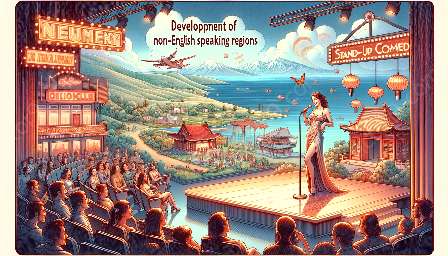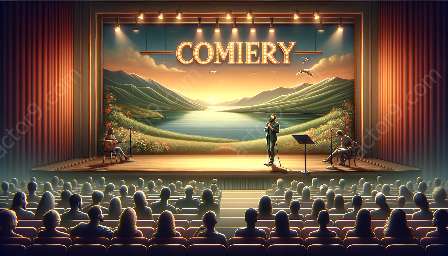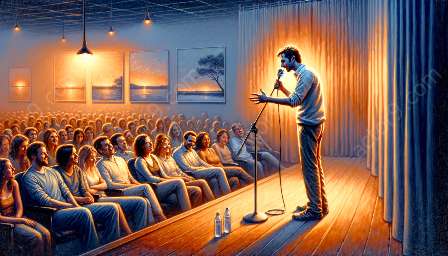Stand-up comedy is an art form that requires both creativity and skill in engaging an audience. Comedians craft their material by drawing on cognitive and emotional processes that influence the content and delivery of their jokes. In this topic cluster, we will delve into the psychological aspects of stand-up comedy and explore the cognitive and emotional processes involved in creating comedic material.
The Psychology of Stand-Up Comedy
The world of stand-up comedy is a rich tapestry of human experiences, observations, and emotions. Comedians often draw from their own lives, relationships, and struggles to craft material that resonates with audiences. The psychological aspects of stand-up comedy encompass a range of cognitive and emotional processes, including:
- Observation and Perception: Comedians have a keen sense of observation, often noticing the subtle nuances and absurdities of everyday life. They are adept at perceiving the world in a unique and humorous way, finding comedy in situations that might seem mundane to others.
- Empathy and Connection: Successful comedians have an innate ability to empathize with others and understand the human condition. They connect with their audience through shared experiences, emotions, and universal truths, creating a sense of camaraderie and rapport.
- Emotional Expression: Comedy is a vehicle for emotional expression, allowing comedians to channel their vulnerabilities, frustrations, and joys into relatable and entertaining material. They use humor as a means of coping with life's ups and downs, transforming pain into laughter.
- Creative Insight: The creative process in stand-up comedy involves generating novel and unexpected perspectives on familiar topics. Comedians use their cognitive flexibility and imaginative prowess to come up with fresh and humorous takes on everyday situations, societal norms, and human idiosyncrasies.
- Timing and Delivery: A crucial aspect of stand-up comedy is the delivery of jokes, requiring a nuanced understanding of timing, rhythm, and audience engagement. Comedians must be attuned to the cognitive processes of humor comprehension and tailor their delivery to elicit the desired response.
The Art of Crafting Comedic Material
Creating comedic material involves a synthesis of cognitive and emotional processes that transcend the conventional boundaries of humor. Comedians navigate a complex interplay of cognitive insight, emotional resonance, and linguistic dexterity to construct jokes that evoke laughter and provoke thought. The process of crafting comedic material entails:
- Conceptualization and Idea Generation: Comedians generate ideas for jokes through a blend of introspection, external stimuli, and creative exploration. They draw inspiration from personal experiences, societal issues, cultural phenomena, and the idiosyncrasies of human behavior.
- Humor Formulation and Structure: Crafting comedic material involves refining raw ideas into structured and coherent jokes. Comedians experiment with different comedic structures, such as one-liners, anecdotes, callbacks, and wordplay, to convey their humor effectively.
- Editing and Refinement: Like any creative process, the development of comedic material requires iterative refinement and editing. Comedians analyze the impact of their jokes, fine-tuning the delivery, timing, and language to optimize comedic effect.
- Emotional Authenticity: Successful comedic material often originates from a place of emotional authenticity and vulnerability. Comedians infuse their jokes with personal authenticity, allowing audiences to connect with the rawness and honesty of their experiences.
- Adaptation and Evolution: Comedic material is not static; it evolves and adapts through continuous performance and audience feedback. Comedians refine their material based on audience reactions, incorporating new insights and perspectives into their routines.
Conclusion
The art of stand-up comedy is a testament to the intricate interplay of cognitive and emotional processes in creating comedic material. Comedians draw on their psychological acumen, emotional intelligence, and creative prowess to immerse audiences in the transformative power of laughter. Understanding the cognitive and emotional underpinnings of comedic material sheds light on the nuanced artistry and captivating allure of stand-up comedy.
























